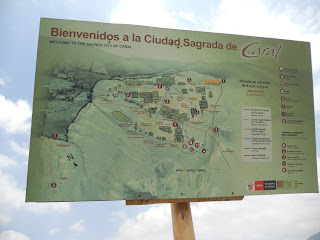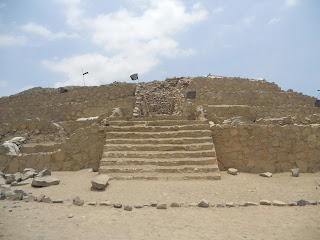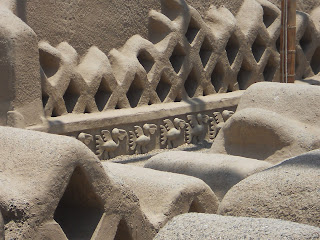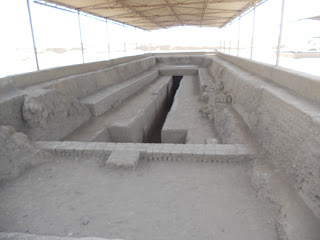After
my last trip to Trujillo, I learned that there were some things that I didn't get to see on that short trip. So, when a friend suggested spending my birthday weekend there, I jumped at the chance to check some more things off my list. Of, course, like the last time, I enjoyed the variety of food Trujillo has to offer while learning about some ancient civilizations and experiencing more Peruvian culture.
On my last trip I saw the Huaca del Sol y la Luna and Chan Chan, both interesting sites representing the Moche and Chimú cultures, respectively. Since this trip, I had heard of another
huaca - the
huaca del arco iris o dragon - that it seemed few people had heard of.
Once we got there, I could see why - it's actually a very small site. (Our whole tour group of 30 people was in and out in 15 minutes!) The
huaca del arco iris o dragon was also comes from the Chimú culture, and had some incredible carvings. Where
Chan Chan was a government center, the
huaca was a religious site where the people would pray and make sacrifices to the gods when there was either too much rain or not enough.
As part of the tour, we also toured
Chan Chan and I got to see some new parts that I hadn't seen on the first trip, including the tombs of the rulers. According to our guide, when a ruler died, the servants would be sealed into the tomb with the body and would drink poison in order to accompany their master into the afterlife.
I got to do a few other new things as well. On a trip to Huanchaco beach, I took a ride on the
caballitos de tortoras, the reed boats common to the area.
We also took in a performance of
marinera and
caballo de paso, another bit of local culture. It was one of my favorite parts of the trip. The
marinera is such a charming, elegant and romantic dance. And the
caballo de paso is at once powerful and graceful.






















